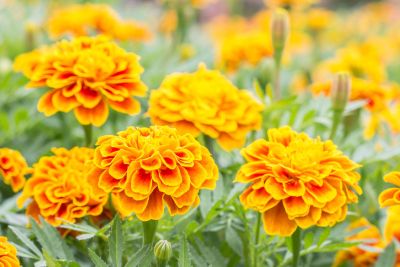You could say the two colorful, sun-loving plants are cousins, but marigold and calendula differences are notable. Read on and we’ll outline a few important differences between these plants.
Marigold vs. Calendula Plants
Why all the confusion? Probably because calendula is often known as pot marigold, common marigold, or Scotch marigold, though it isn’t a true marigold at all. Marigolds are native to South America, southwestern North America, and tropical America. Calendula is native to northern Africa and south-central Europe. Other than being from two separate genus families and hailing from different areas, here are some ways to tell the difference between marigolds and calendulas:
Seeds: Calendula seeds are brown, curved, and slightly bumpy. Marigold seeds are straight black seeds with white, paintbrush-like tips.
Size: Calendula plants generally reach heights of 12 to 24 inches (31-61 cm.), depending on the species and growing conditions. They rarely exceed 24 inches (61 cm.). Marigolds, on the other hand, vary widely, with species ranging from 6 inches (15 cm.) to 4 feet (1 m.) tall.
Aroma: Calendula flowers and leaves have a slightly sweet aroma, while the odor of marigolds is unpleasant and strangely pungent or spicy.
Shape: Calendula petals are long and straight, and the blooms are rather flat and bowl-shaped. They may be orange, yellow, pink, or white. Marigold petals are more rectangular with rounded corners. They aren’t flat, but slightly wavy. Colors range from orange to yellow, red, mahogany, or cream.
Toxicity: Calendula plants are edible, and all parts of the plant are safe, although they reportedly don’t taste very good. However, it’s always wise to check with a professional herbalist before eating the plant or brewing tea. Marigolds are a mixed bag. Some species may be edible, but it’s probably safest not to eat any part unless you’re absolutely sure of its safety.
